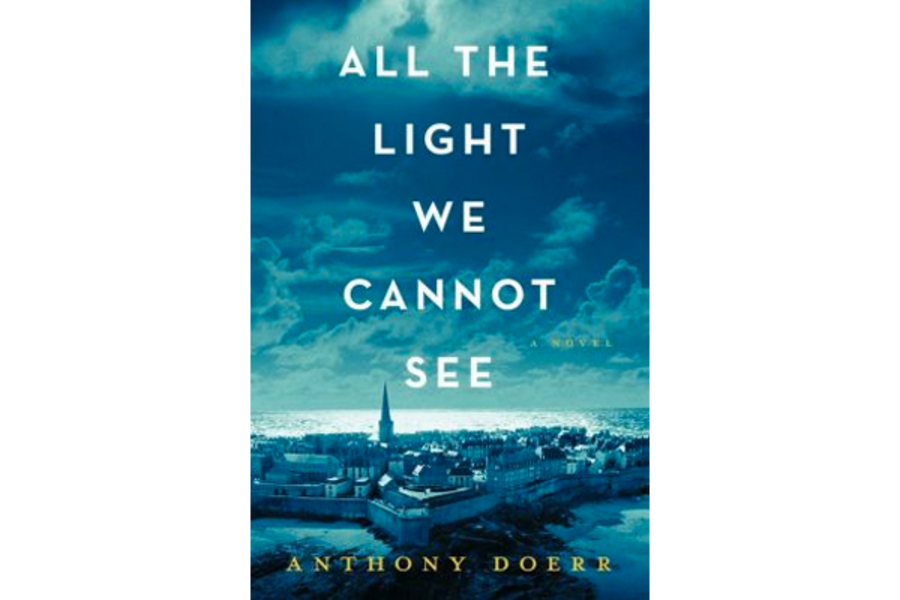'All the Light We Cannot See' is a compelling WWII novel by acclaimed author Anthony Doerr
Loading...
There are certain tropes that have perhaps been overdone in literature: orphans, plucky children with a disability, cursed gemstones, World War II. Anthony Doerr combines all of the above in his new novel, All the Light We Cannot See – and pulls it off with stylistic aplomb.
The 550-page book opens with the Allied bombing of Saint-Malo in Brittany in 1944. Marie-Laure, a blind teenager from Paris, is hiding in the attic of her great-uncle’s house. Werner Pfennig, a white-haired, 18-year-old German soldier, is buried alive in a basement with the surviving members of his unit.
Doerr immediately jumps back in time 10 years, when Werner, an orphan in a coal-mining town, first learns to repair a radio at age 8. “Nothing he’s encountered before has made so much sense,” Werner thinks. At night, he and his younger sister, Jutta, search the broadcasts until they find the voice of a Frenchman who talks to them about science and plays classical music.
Werner gets a reputation as able to fix small appliances for people in the town. After he repairs the radio of a Nazi official, he wins a scholarship to a school for Hitler Youth. “This snowy-haired dreamer plucked out of the soot.”
It keeps him out of mandatory service in the coal mines, but, he soon realizes, the school comes with its own perils. These are some of the best, most heartbreaking chapters in the book, as Werner and his only friend, Frederick, have to choose between conformity and morality.
Marie-Laure LeBlanc grows up wandering the Museum of Natural History in Paris, where her father, Daniel, is the locksmith. He builds elaborate puzzle boxes for his daughter and wooden models of her neighborhood, so that Marie-Laure, who lost her sight at age six, can learn to navigate the streets safely. Every year on her birthday, he buys her a new book in Braille: “Around the World in Eighty Days,” Jules Verne’s “Twenty Thousand Leagues Under the Sea.”
When the Nazis invade France, Daniel and Marie-Laure flee Paris. Father and daughter wind up in Brittany with her agoraphobic great-uncle and his cook-housekeeper, a member of the Resistance.
Packed in their minimal luggage is a 133-carat blue diamond – or perhaps a piece of blue glass. The Museum sent couriers out of Paris with four copies of its most valuable gem, the Sea of Flames – one real and three fakes – to protect it from the Nazis. Daniel assumes he has one of the decoys. And his real treasure is his little girl, whom he is determined to bring to safety.
However, a Nazi gemologist is determined to acquire the diamond, which is reputed to offer its bearer immortality – and kill everyone he or she loves. Sergeant Major Reinhold von Rumpel isn’t exactly from “Raiders of the Lost Ark” central casting – instead, he’s the personification of banal evil. “He has a wife who suffers his absences without complaint, and who arranges porcelain kittens by color, lightest to darkest, on two different shelves in their drawing room in Stuttgart,” Doerr writes.
The curse surrounding the diamond is the least interesting part of the novel: During World War II, there were enough real sources of death and tragedy that a mythological one was hardly needed. And Marie-Laure, Werner, and their companions are so compelling, readers don’t need a shiny trinket to keep turning pages.
Doerr has won multiple awards, including four O. Henry Awards, three Pushcart Prizes, a Guggenheim Fellowship, and The Story prize. He’s the author of two short story collections, another novel, “About Grace,” and a memoir, “Four Seasons in Rome.”
He deftly guides “All the Light We Cannot See” toward the day Werner’s and Marie-Laure’s lives intersect during the bombing of Saint-Malo in what may be his best work to date.
This is a novel in which canned peaches, John James Audubon, Jules Verne, sea snails, and DeBussy have more value than a polished hunk of compressed carbon. It is a calculus both inarguable and deeply moral.
Yvonne Zipp is the Monitor fiction critic.






